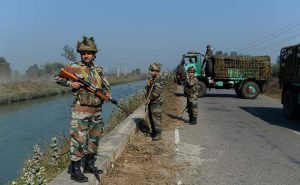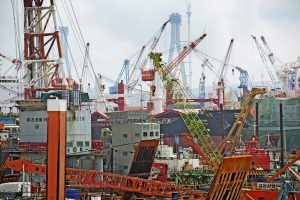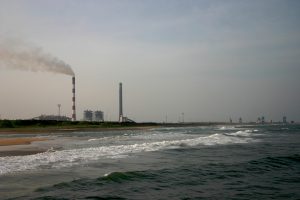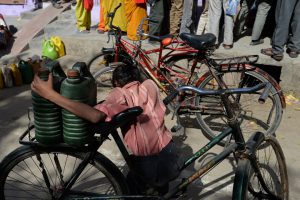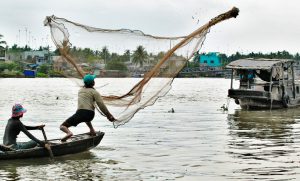Six weeks after Manipur experienced its strongest earthquake in 90 years, the government of this state in north-eastern India shows no sign of having learnt a lesson — there is no new rule to make quake-resistant construction mandatory, no new regulation on high-rise buildings, no strengthening of rules to make dams more quake resistant, not even quake preparedness drills in schools or colleges.
The January 4 quake that measured 6.8 on the Richter scale killed eight people and injured 120 more, according to official statistics. Its epicentre was at Noney village in Tamenglong district, 55 kilometres from state’s capital Imphal. The tremors led to casualties in neighbouring Bangladesh and were felt over 600 km away in Kolkata, the largest city in eastern and north-eastern India.
In Imphal, a six-storey building collapsed, buildings in the state government’s secretariat complex were damaged, as were the air traffic control tower, visitors’ gallery and compound wall of the airport. Elsewhere in the state, a church crumbled, a bridge was damaged and roads around the epicentre developed fissures. The telecommunications network was badly affected.
![Building damaged by the quake [image by Yambem Laba]](/wp-content/uploads/2016/02/Manipur_Quake_Damage.jpg)
High risk zone, no lesson learnt
All of north-eastern India is in highest-risk quake zone. Manipur has had 25 recorded quakes in the last 90 years, so there is no reason for the authorities to be totally unprepared for one.
But Jason A Shimray, Secretary of the Relief and Disaster Management department of Manipur government, told thethirdpole.net that the state’s Disaster Management Institute exists only on paper. It has just two staff members. The state’s Disaster Response Force is supposed to have around 900 people. It has 37, all drawn from Manipur Police.
Effectively, India’s 2005 Disaster Management Act exists only in name in Manipur. This is true for the rest of north-eastern India as well. In the wake of the disastrous 1950 Assam quake the state government had started building lightweight structures using bamboo, as the tradition in the region had been. But all that has been overtaken by the mushrooming of high-rise buildings in cities such as Guwahati, Shillong, Imphal, Aizawl, Dimapur, Dibrugarh, Jorhat and others. Experts keep warning that these buildings are highly vulnerable to quakes, there are laws and rules, but very little implementation.
Iconic market damaged
For the peoples’ psyche perhaps the worst long-term quake damage in the insurgency-plagued state was to Ima Keithel, the iconic Mothers’ Market of Imphal. This is the place where over 2,000 women gather every day to sell their wares. But they are far more than vendors — they are successors of women who rose against British colonial power in 1904 and again in 1939, when they successfully agitated against forced labour and expropriation of rice from the state. In recent decades they have been the voice of sanity standing between insurgents and security forces and getting both to eschew violence as far as possible.
![Quake damage have forced the mother's market back on the road [image by Yambem Laba]](/wp-content/uploads/2016/02/Mothers-market.jpg)
The vendors are back in the open, politicians are fighting over where and how they should be housed, and just about every Imphal resident is upset that the rehabilitation process has not even started.
Soibam Ibotombi of the Department Earth Sciences at Manipur University says he checked the two damaged buildings after the quake, and found the mortar had less than 50% cement, far lower than it should have.
It is perhaps an apt reflection of the crumbling state in and of Manipur.
![<p>A road near the epicentre of the January 4 Manipur quake [Image by Yambem Laba]</p>](https://dialogue.earth/content/uploads/2016/02/Manipur_Quake_Damage_4_January_2016.jpg)

